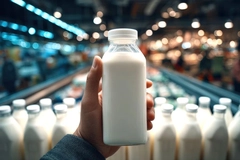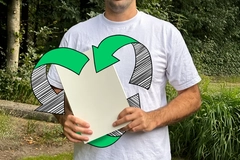Tomra partnership advances waste sortation technology to drive recycling in household packaging
06 Aug 2024 --- Tomra Recycling and Henkel are teaming up to advance the sortability of packaging. Henkel has installed one of Tomra’s detection systems in its test laboratory to test packaging before market launch to evaluate their sorting and recycling properties.
Johannes Jacoby, head of Market Strategy at Tomra Recycling, talks to Packaging Insights about household packaging recycling challenges and the needed packaging design changes to improve sortability and recyclability.
“Sorting is a crucial step in recycling, and our industry’s goal is to achieve a sufficient purity level in the sorting results so that the resulting recyclates can be reused for similar products,” says Jacoby.
“This closed-loop recycling remains challenging due to stricter requirements for product packaging in the food and cosmetics sectors, or the absence of comprehensive guidelines for packaging design.”
“While there are measures like additional EPR fees for using black plastic, we can still find a lot of product packaging with elaborate decorations, labels made of different materials than the main product, or shiny coatings on the store shelves. These features may attract consumers but complicate the sorting process, making further recycling difficult,” he adds.
Tomra Autosort has been installed in approximately 100 countries worldwide to date.Tomra’s sorting tech
At Henkel’s site in Düsseldorf, Germany, Tomra’s Autosort is used for testing, a sorting solution that has been on the market for nearly 30 years.
Henkel is a manufacturer of globally recognized branded products such as Schwarzkopf, Persil and Pritt.
The scanner is equipped with a near-infrared and a VIS sensor. Using this sensor combination, the device not only detects the product material type, such as plastics like PP, PET, HDPE or paper, but also the color of the packaging, which can be decisive for sortability.
The Autosort has been installed in approximately 100 countries worldwide to date, enabling Henkel to quickly and efficiently achieve results that meet those of real-life industrial plants.
Alba Santmarti, packaging sustainability manager at Henkel Consumer Brands, says: “Design for Recycling is an integral part of the product development process at Henkel. We invest in our in-house capacities to check the sortability of our consumer goods packaging at an early stage. This is the only way to recycle valuable materials in subsequent steps and close material cycles.”
Packaging design upgrades
For a successful transition to a circular economy, collaboration across the entire value chain is essential. Product manufacturers, in particular, play a critical role in the success of recycling, says Jacoby.
“To enhance the sortability of their packaging, it is highly recommended to use monomaterials instead of multilayer packaging, make thoughtful color choices and forgo carbon black packaging.”
“Additionally, using smaller-sized labels can support the sorting process by allowing sensors to detect the main product more effectively (and not the label), to name just a few examples. Testing the product packaging before market launch can further help manufacturers ensure it has the right properties for easy sorting and recycling after disposal.”
Tomra’s Autosort Autosort is a powerful multi-functional sorting system.
Autosort was the first sensor-based system on the market to use near-infrared technology to sort waste into different fractions, explains Jacoby.
“Introduced almost 30 years ago, it now boasts the largest installed base of waste sorting systems on the market. Currently used in approximately 100 countries, it has provided us at Tomra with unparalleled industry expertise and experience that we are eager to share to get to full material circularity,” he says.
Because of its versatile setup and high-performance sensors, Autosort is considered a powerful multi-functional sorting system.
“It can be used for numerous applications, including plastics, paper, wood, municipal solid waste, construction and demolition waste, textiles and more,” asserts Jacoby.
“The sorting all-rounder can be further enhanced by adding different sensors, technologies or connectivity options to its system, making it a future-proof solution that meets the needs of the industry. One of the latest add-on technologies is GAINnext, a deep learning technology that recognizes objects based on their shape, size, dimensions or other characteristics.”
By Natalie Schwertheim












